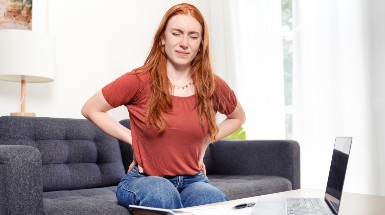People with low back pain could be offered apps to help them manage their condition after seven digital technologies were recommended by the medicines regulator NICE
Their independent committee evaluating the seven digital technologies said they could be offered to those aged 16 years and over with non-specific low back pain. Some of the apps are designed to help people with new back pain and others for people who have had the issue for more than 3 months and some apps help both groups.
Some offer access to psychological treatment including access to pain specialists and psychologists, or a programme of video tutorials on managing pain, and mindfulness sessions.
The draft recommendation of the digital platforms aims to reduce inequalities in accessing musculoskeletal services across the country. Other benefits envisaged include reducing waiting lists, the number of GP and physiotherapy appointments, the use of medication and the potential need for surgery.
The technologies – which are web-based applications and digital platforms – can be used by NHS patients while further evidence is generated over the next three years to evaluate their clinical and cost-effectiveness. Evidence will be generated in several areas including the length of time people use the apps for before they feel better to return to normal activities.
A patient would be assessed by a GP or other healthcare professional before they could be offered the digital treatments. Some apps provide initial triage and assessment making it possible for people with symptoms of low back pain to self-refer to the platforms as an additional support to non-pharmacological treatment.
The NHS Long Term Plan states that low back pain is the biggest cause of disability. Musculoskeletal conditions account for 30% of GP consultations annually and according to UKHSA, there are 9.11 million people living with long-term back pain in England.
Mark Chapman, interim director of medical technology and digital evaluation at NICE, said: “More than two million people suffer from low back pain each year and there are considerable pressures on NHS services to provide the treatment and care to those needing support with this debilitating condition.
“The digital platforms our committee has recommended could provide the NHS with extra capacity to get those effected off waiting lists, which vary in length across the country, and into treatment.
“We believe these technologies have the potential to offer value for money for the taxpayer, while offering people with low back pain quicker access to get the care they need at a time and place of their choosing.”
Health Minister Will Quince said: “These apps are yet another example of how technology can be used help patients get the care they need, when they need it.
“They offer a range of services which will allow patients to manage lower back pain from the comfort of their homes by improving access to musculoskeletal services – which will form a key part of our Major Conditions Strategy.
“This will help to reduce pressures on the NHS and can help to cut waiting lists – one of the government’s top priorities – and will help people to live happier, healthier lives.”







